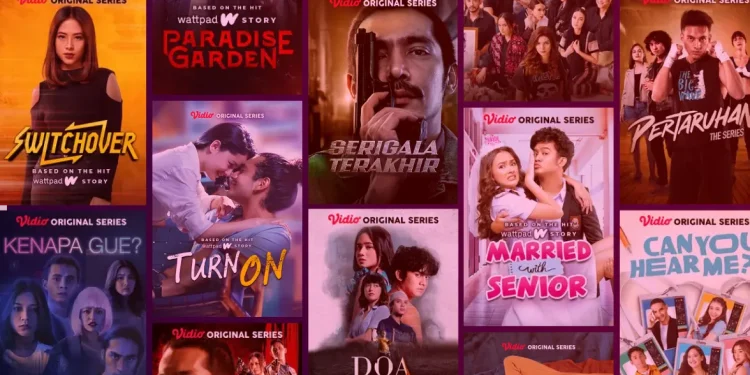In the last decade, Indonesian cinema has witnessed a remarkable transformation. Once primarily associated with local theaters, indie screenings, or regional television, Indonesian films are now finding a new and influential home: streaming platforms. Services such as Netflix, Disney+ Hotstar, Vidio, and Prime Video have opened the floodgates for a global audience, giving Indonesian filmmakers an unprecedented opportunity to showcase their stories on an international stage. This rise has not only reshaped the domestic film industry but also redefined how Indonesia is represented in the global cultural landscape.
Streaming platforms have become the cornerstone of contemporary media consumption. For many audiences, especially in the post-pandemic era, going to theaters has been replaced by the comfort of watching films at home. The digital environment allows people to discover titles that they may not have encountered otherwise. For Indonesian cinema, this transition has proven to be a powerful catalyst, bringing fresh visibility to a film industry that is rich in talent, creativity, and cultural depth.
A New Era for Indonesian Storytelling
Indonesian cinema has long carried a reputation for unique storytelling, rooted in diverse cultural and historical backgrounds. From Java to Sumatra, from Bali to Papua, every region offers a wealth of traditions, folklore, and perspectives that filmmakers can explore. Yet, for decades, these stories often struggled to reach beyond domestic borders. Limited distribution channels, lack of marketing infrastructure, and competition with Hollywood blockbusters made it difficult for Indonesian films to find a sustainable place on the international market.
Streaming platforms have changed that equation entirely. With subtitles in multiple languages and global recommendation algorithms, a film from Jakarta can now appear on the screens of viewers in Paris, Los Angeles, or Seoul. Movies like The Night Comes for Us and Ali & Ratu Ratu Queens demonstrate how Indonesian films can achieve wide recognition once they are positioned within global streaming ecosystems. These platforms effectively democratize exposure, allowing stories from Indonesia to stand alongside productions from Hollywood, Europe, or South Korea.
The Pandemic as a Turning Point
The COVID-19 pandemic accelerated the global embrace of streaming. Cinemas were closed, productions were delayed, and audiences sought entertainment at home. In Indonesia, this shift was particularly significant. Local streaming services such as Vidio and KlikFilm saw a surge in subscribers, while international players like Netflix aggressively expanded their presence in Southeast Asia.
For Indonesian filmmakers, the pandemic era presented both challenges and opportunities. On one hand, box office revenues plummeted. On the other, streaming platforms became the lifeline through which films could still reach audiences. The increased demand for localized content meant that platforms were actively seeking Indonesian productions to enrich their catalogs. This created space for collaborations between streaming companies and local studios, resulting in a wave of original Indonesian content designed for digital-first audiences.
The Global Spotlight: Action and Horror Leading the Way
Two genres in particular have proven effective in pushing Indonesian cinema into the global spotlight: action and horror.
Action films like The Raid (2011) and The Raid 2 (2014), though initially distributed in theaters, later found extended life on streaming platforms. Their innovative choreography, gritty urban settings, and martial arts authenticity stunned international audiences, making Indonesian action cinema a recognizable brand. The cult following of these films set the stage for future Indonesian titles to gain traction on streaming services.
Horror, meanwhile, has always been a staple of Indonesian cinema. Rooted in local mythology and folklore, Indonesian horror films offer something distinct from Hollywood jump scares or Japanese supernatural thrillers. Movies such as Satan’s Slaves (2017) and its sequel became global sensations on streaming platforms, with viewers drawn to their atmospheric storytelling and cultural specificity. By blending universal themes of fear with local legends, Indonesian horror carved a unique niche in the international market.
Streaming services recognized the potential of these genres and began investing more in Indonesian productions. As a result, films once considered “local” are now marketed to global audiences, strengthening Indonesia’s presence in the worldwide entertainment industry.
Streaming as a Platform for Diversity
One of the most important aspects of streaming is its ability to showcase diversity. Indonesian cinema is not monolithic—it includes romance, comedy, drama, and arthouse films alongside action and horror. Platforms have provided space for smaller, more experimental works that may not have thrived in traditional theaters.
For instance, romantic comedies like Love for Sale gained widespread popularity when introduced to wider audiences through digital distribution. Similarly, family dramas and coming-of-age films have found a new generation of fans eager to explore narratives outside the mainstream. This shift helps highlight the multifaceted nature of Indonesian society, where urban modernity, rural traditions, and global influences constantly intersect.
Moreover, streaming platforms make it easier to highlight underrepresented voices. Female directors, indigenous filmmakers, and minority communities can now reach larger audiences than ever before. The global appetite for authenticity and fresh perspectives ensures that stories from the margins of Indonesian society are no longer confined to niche screenings. Instead, they can resonate with viewers across continents.
The Role of Government and Industry Support
The rise of Indonesian cinema on streaming platforms is not just the result of technological change but also the product of growing institutional support. The Indonesian government, through agencies such as the Indonesian Film Board, has actively promoted local films as part of its cultural diplomacy. By supporting participation in international film festivals and encouraging collaborations with streaming companies, the government helps position Indonesian cinema as a valuable export.
Local production houses are also adapting. Many are shifting their strategies to include direct partnerships with streaming platforms, producing content specifically tailored for digital release. This not only ensures a steady demand for films but also provides financial stability in a traditionally volatile industry. For example, co-productions between Indonesian studios and Netflix or Amazon Prime demonstrate how local players can leverage international partnerships for greater visibility and resources.
Challenges in the Streaming Era
Despite the many opportunities, the rise of Indonesian cinema on streaming platforms is not without challenges. One of the most pressing concerns is the balance between artistic integrity and algorithm-driven popularity. While streaming services provide exposure, they also rely heavily on data-driven decisions about what kinds of films are promoted. This can sometimes encourage formulaic productions that prioritize global appeal over local nuance.
Another challenge lies in the economic model. While streaming offers filmmakers a wider audience, the financial arrangements are often less transparent than traditional box office revenue. Some directors and producers worry about fair compensation and the long-term sustainability of relying too heavily on streaming companies.
Piracy remains another hurdle. In Indonesia, unauthorized distribution of films has long undermined the local industry. Even with streaming platforms offering affordable access, piracy continues to cut into profits and discourage investment. Tackling this issue will be essential to ensuring the continued growth of Indonesian cinema.
Audience Transformation and Cultural Exchange
The rise of streaming has also transformed Indonesian audiences themselves. Younger generations, accustomed to global content, are increasingly open to diverse narratives. They are just as likely to watch a South Korean drama, an American blockbuster, or an Indonesian arthouse film in a single week. This cultural fluidity creates fertile ground for local filmmakers to experiment with hybrid storytelling styles that resonate both domestically and internationally.
At the same time, international audiences are discovering Indonesia through cinema. Films provide a window into the nation’s landscapes, traditions, and contemporary struggles. A viewer in Europe watching an Indonesian drama about Jakarta’s urban sprawl or a Papuan village’s cultural resilience gains a deeper understanding of the country beyond the clichés of tourism brochures. In this way, cinema becomes a form of cultural exchange, enhancing Indonesia’s soft power on the world stage.
The Future of Indonesian Cinema on Streaming
Looking forward, the trajectory of Indonesian cinema on streaming platforms appears promising. As the industry continues to professionalize and embrace global partnerships, Indonesian films are likely to secure an even stronger foothold in the international market. There are several trends to watch:
- Original Series: Streaming platforms are increasingly commissioning Indonesian original series, not just films. Serialized storytelling allows for more nuanced character development and has the potential to build loyal fan bases across borders.
- International Co-Productions: Collaborations between Indonesian filmmakers and international studios are expected to grow, leading to higher production values and broader appeal.
- Technological Innovations: With advances in special effects and virtual production, Indonesian filmmakers can experiment with genres like science fiction and fantasy, which have historically been underexplored in the local industry.
- Festival-to-Streaming Pipelines: Films showcased at international festivals are often quickly picked up by streaming services, creating a direct path from critical acclaim to global accessibility.
The convergence of these trends suggests that Indonesian cinema is on the cusp of an exciting new chapter.
Conclusion: A Cinematic Renaissance in the Digital Age
The rise of Indonesian cinema on streaming platforms is more than a technological shift; it is a cultural renaissance. By breaking down barriers of geography and distribution, streaming services have allowed Indonesian filmmakers to share their stories with the world. From action-packed blockbusters to intimate dramas, from horror steeped in folklore to romantic comedies infused with urban sensibilities, the spectrum of Indonesian storytelling is finally reaching its deserved audience.
While challenges remain in terms of economic sustainability, artistic independence, and piracy, the momentum is undeniable. Indonesian cinema is no longer confined to local theaters or niche festivals—it is now part of the global conversation. As streaming platforms continue to expand and audiences hunger for diverse narratives, Indonesia’s vibrant film industry is poised to shine brighter than ever before.
In many ways, the rise of Indonesian cinema on streaming platforms reflects a broader truth: stories know no boundaries. With the digital revolution, Indonesia’s voice in the global cinematic orchestra is not just being heard—it is rising, resonating, and redefining what global cinema can be.





